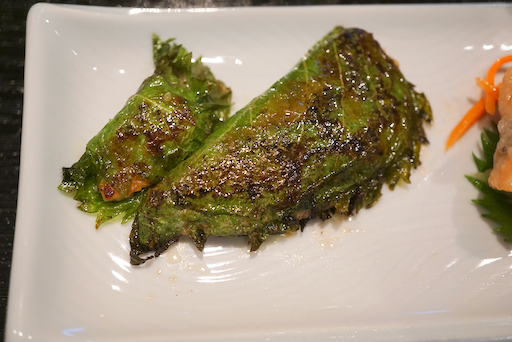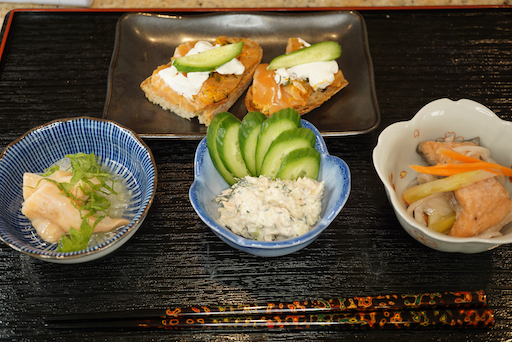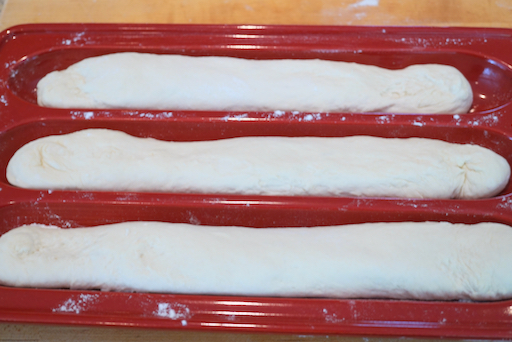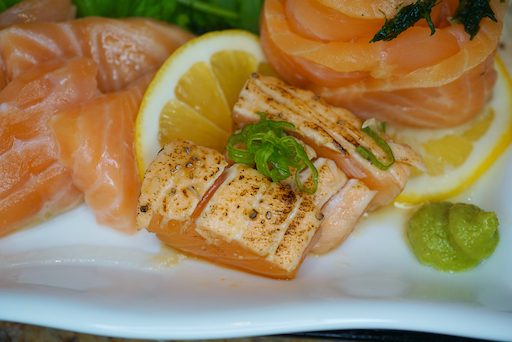Since the olives are salty I didn’t add any additional salt. It has a nice texture and the taste of the olives was really nice.
Few pimentos got out into the bread.
Ingredients
400 grams bread flour
3 grams instant yeast
200 grams salt brined olives (I used 80% Divina Kalamata olivs and 20 % pimento stuffed green olives), roughly chopped
350 grams of cold water (50-55F)
Directions
Same as other no knead breads.
Same as other no knead breads.
Mixed everything in a bowl with a wooden spoon. This is definitely a wet dough since the recipe called for 50 grams more water than I used in the previous versions of no kneed bread I have made .
Cover with a plastic wrap and let it rise for 12-18 hours.
Remove the dough from the bowl to a well floured board.
Bring the outer edges into the center to make a round shape.
Transfer it to a well floured dish towel, dust the surface with more flour and fold the towel to cover. Let it rise for 1-2 hours.
Preheat the oven with the cast iron pot inside to 450F for at least 30 minutes prior to baking.
Place the dough in the heated pot, put on the lid and bake for 30 minutes
Remove the lid and bake an additional 5-10 minutes.
Take out the bread and let it completely cool on a cooling rack.
Since this was such a wet dough, the dish towel I used for the second rising was soaked, the dough stuck to it and it was almost impossible to place the dough in the hot cast iron pot. But, once in, it baked nicely. Because of the high hydration ratio, the inside the bread is really tender and the crust is nice. The bursts of olive and salty flavors are great. We really like this bread but I may reduce the water to 300 grams just because it is so difficult to handle the wet and sticky dough. I also would like to replace 100 grams of wheat flour with rye flour which may make this bread even better.
Cover with a plastic wrap and let it rise for 12-18 hours.
Remove the dough from the bowl to a well floured board.
Bring the outer edges into the center to make a round shape.
Transfer it to a well floured dish towel, dust the surface with more flour and fold the towel to cover. Let it rise for 1-2 hours.
Preheat the oven with the cast iron pot inside to 450F for at least 30 minutes prior to baking.
Place the dough in the heated pot, put on the lid and bake for 30 minutes
Remove the lid and bake an additional 5-10 minutes.
Take out the bread and let it completely cool on a cooling rack.
Since this was such a wet dough, the dish towel I used for the second rising was soaked, the dough stuck to it and it was almost impossible to place the dough in the hot cast iron pot. But, once in, it baked nicely. Because of the high hydration ratio, the inside the bread is really tender and the crust is nice. The bursts of olive and salty flavors are great. We really like this bread but I may reduce the water to 300 grams just because it is so difficult to handle the wet and sticky dough. I also would like to replace 100 grams of wheat flour with rye flour which may make this bread even better.





























